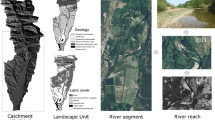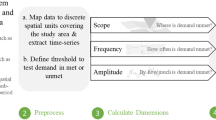Abstract
The need for a better management of estuaries requires an environmental characterization following a methodology that allows the comparison of distinct estuarine systems and the assessment of their evolution. The peculiar characteristics of estuaries, in particular their intrinsic variability, make this characterization difficult and there is no commonly accepted general methodology available. The approach followed in freshwater ecosystems is generally based on the concept of environmental indicators, but such a concept has not been developed for estuaries. Indeed, a different approach is needed here, due to the spatial heterogeneity and the different time scales associated with the processes that control water quality.
This paper presents a proposal for a methodology that starts with observed values and uses a procedure to integrate these values in time and space in order to calculatesignificant values, upon whichnormalized indicators are built which take into account criteria based either on legal, scientific or heuristic concentration limits. A normalization is carried out in two steps: (1) application of a mathematical operator to theignificant values, (2) transformation using the concept ofpenalty curves. This methodology may be complemented with the definition ofquality classes, particularly appealing and useful, as tools to communicate with decision makers and the public in general.
Water quality data pertaining to the Tejo estuary are used to test the methodology.
Similar content being viewed by others
References
Anon. no date.Guidelines and criteria for water quality management in Ontario. Ministry of the Environment of Ontario, Ontario, CA.
Anon. 1989.Economic instruments for environmental protection. OECD, Paris, FR.
Anon. 1991a.A report of Canada progress towards a national set of environmental indicators. A state of the environment report. SOE Report No 91-1. Environment Canada, Ottawa, CA.
Anon. 1991b.Water in the Netherlands: A time for action. National Policy Document on Water Management. 2nd ed. Ministry of Transport and Public Works, The Hague, NL.
Anon. 1993.Draft synthesis report—Group on the State of the Environment. Workshop on indicators for use in environmental performance reviews. Doc. ENV/EPOC/SE(96), OECD, Paris, FR.
Alegre, H., Hirne, W., Baptista, J.M. & Parena, R. 2000.Performance indicators for water supply services. Manual of best practice. International Water Association Publishing, London, UK.
Bricker S.B., Clement, D.E., Pirhalla, D.E., Orlando, S.P. & Farrow, D.R.G. 1999.National estuarine eutrophication assessment: Effects of nutrient enrichment in the nation's estuaries. NOAA, National Ocean Service, Special Projects Office and the National Centers for Coastal Ocean Science, Silver Spring, MD, US.
Cardoso da Silva, M. 1993.Estudo preparatório para a definição de projectos de ambiente elegíveis no contexto do fundo de Coesão. Vol. 3—Indicadores do estado do ambiente para águas costeiras e estuariais Relatório 106/93 NEt, Laboratório Nacional de Engenharia Civil, Lisboa, PT.
Cardoso da Silva, M. 1997.Caracterização ambiental de zonas costeiras e estuários.In:Colectânea de Ideias sobre a Zona Costeira de Portugal.EUROCOAST Portugal, Lisboa, PT.
Cardoso da Silva, M. 1999aA gestão dos estuários no contexto dos planos de bacia. Seminário da Associação EUROCOAST: Os estuários de Portugal e os planos de bacia hidrográfica. LNEC, Lisboa, PT.
Cardoso da Silva, M. 1999b. Classificação ambiental de estuários, recursos hídricos, 20 2.
Cardoso da Silva, M. 2002.Caracterização de estuários: Proposta de metodologia para a definição de domínios de integração espacial e temporal de variáveis. Congresso da Água,APRH, Porto, PT.
Cardoso da Silva, M., Calvão, M.T. & Figueiredo, H. 1986a.Controlo da qualidade da água. Resultados referentes às observações realizadas em 1982 e 1983 Estudo ambiental do estuário do Tejo—III Série 9. Secretaria de Estado do Ambiente e dos Recursos Naturais, Lisboa, PT.
Cardoso da Silva, M., Moita, M. T., Calvão, M. T. & Figueiredo, H. 1986b.Variabilidade de pigmentos (clorofila a e feopigmentos) na zona montante de estuário do Tejo Resultados referentes às observações realizadas em 1982 e 1983. Estudo ambiental do estuário do Tejo—III Série no7. Secretaria de Estado do Ambiente e dos Recursos Naturais, Lisboa, PT.
Cardoso da Silva, M. & van de Wetering, B. 1992Sustainable Development of Coastal Zones. International Conference of the Pearl River Estuary in the Surrounding Areas of Macao. Macao, PT.
Coelho, S.T. 1997.Performance indicators assessment in water distribution through mathematical modelling. International Association of Water Supply. Workshop on Performance Indicators, LNEC, Lisboa, PT.
Cooper, J. A., Ramm, A. & Harrison N. 1994. The Estuarine Health Index: a new approach to scientific information transfer.Ocean Coastal Manage. 25: 103–141.
Correia, F.N., Beja Neves, E. 1993. Estudo preparatório para definição de projectos de ambiente elegíveis no contexto do fundo de coesão. Vol. 1—Synthesis Report. Rel. 121/93-GIAmb, Laboratório Nacional de Engenharia Civil, 1993, Lisboa, PT.
Dyer, K. R. 1997.Estuaries. A physical introduction, 2nd. ed. John Wiley and Sons, PLACE?.
Ferreira, J.G. 2000. Development of an estuarine quality index based on key physical and biogeochemical features.Ocean Coastal Manage. 43: 99–122.
Hawkes, H.A. 1997. Origin and development of the biological monitoring working party score system.Water Res. 32: 964–968.
Horton, R.K. 1965. An index number system for rating water quality.J. Water Pollut. Contr. Fed. 37: 300–306.
Martins, M.M. & Duffner, M.J.L. 1982.Estudo da qualidade da água. Resultados referentes às observações sinópticas em 1980. Estudo Ambiental do Estuário do Tejo, CNA/TEJO 14 (Rel. 13), Lisboa, PT.
Martins, M.M., Calvão, M.T. & Figueiredo, H. 1983aEstudo da qualidade da água. Resultados referentes às observações sinópticas em 1982. Estudo Ambiental do Estuário do Tejo, CNA/TEJO 30, Lisboa, PT.
Martins, M.M., Machado, V., Calvão, M.T. & Crespo, J.C. 1983b.Estudo da qualidade da água. Resultados referentes às observações sinópticas em 1981. Estudo ambiental do estuário do Tejo. CNA/TEJO, Lisboa, PT.
Opschoor, H. & Reijnders, L. 1991. Towards sustainable development indicators. In: Kuik, O. & Verbruggen, H. (eds.)In search of indicators of sustainable development, pp. xxx-yyy Kluwer Academic Publishers, Dordrecht, NL.
Ramos, T.B., Melo, J.J. & Quintino, V. 1996.Sistemas de indicadores e índices de qualidade de água e sedimentos em zonas costeiras. Conferência Nacional da Qualidade do Ambiente, Aveiro, PT.
Smith, D.G. 1990. A better water quality indexing system for rivers and streams.Water Res. 24: 1237–1244.
ten Brink, B.J.E., Hosper, S.H. & Colijn, F. 1991. A quantitative method for description and assessment of ecosystems: the Amoeba approach.Mar. Pollut. Bull. 23: 295–270.
Tomlinson, D.L., Wilson, J.G., Harris, C.R. & Jeffrey, D.W. 1980. Problems in the assessment of heavy metal levels in estuaries and the formation of a pollution index.Helgolander Meeresunters. 33: 566–575.
Author information
Authors and Affiliations
Corresponding author
Rights and permissions
About this article
Cite this article
Cardoso da Silva, M., Carmona Rodrigues, A. Environmental indicators as tools for the management of estuaries—Methodology and case study of the Tejo estuary. J Coast Conserv 10, 13–24 (2004). https://doi.org/10.1652/1400-0350(2004)010[0013:EIATFT]2.0.CO;2
Received:
Revised:
Accepted:
Issue Date:
DOI: https://doi.org/10.1652/1400-0350(2004)010[0013:EIATFT]2.0.CO;2




